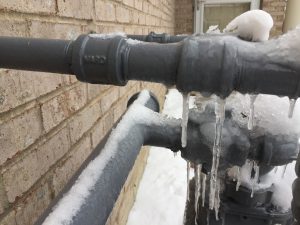Important Tips for Avoiding Frozen Plumbing in Winter Conditions
Important Tips for Avoiding Frozen Plumbing in Winter Conditions
Blog Article
Here down the page you might get additional dependable insight involving Helpful Tips to Prevent Frozen Pipes this Winter.

Winter can ruin your plumbing, especially by freezing pipelines. Right here's how to stop it from taking place and what to do if it does.
Intro
As temperature levels decline, the risk of icy pipelines increases, possibly leading to costly repairs and water damages. Understanding how to avoid icy pipelines is important for homeowners in cold environments.
Recognizing Frozen Pipelines
What causes pipes to ice up?
Pipelines ice up when subjected to temperatures listed below 32 ° F (0 ° C) for extended periods. As water inside the pipes ices up, it increases, putting pressure on the pipeline walls and possibly causing them to burst.
Risks and damages
Frozen pipelines can cause supply of water disruptions, home damage, and expensive repair work. Ruptured pipelines can flood homes and create comprehensive structural damage.
Indicators of Frozen Pipes
Determining icy pipelines early can avoid them from bursting.
Just how to recognize icy pipelines
Look for reduced water flow from taps, unusual smells or sounds from pipelines, and noticeable frost on revealed pipelines.
Prevention Tips
Insulating vulnerable pipelines
Wrap pipes in insulation sleeves or use warm tape to secure them from freezing temperatures. Focus on pipelines in unheated or outside areas of the home.
Home heating strategies
Maintain interior spaces adequately warmed, especially locations with pipes. Open cupboard doors to allow cozy air to flow around pipelines under sinks.
Shielding Outside Pipes
Yard tubes and outside taps
Disconnect and drain pipes garden pipes prior to winter season. Mount frost-proof faucets or cover outside taps with protected caps.
What to Do If Your Pipelines Freeze
Immediate actions to take
If you think frozen pipelines, maintain taps open up to eliminate pressure as the ice melts. Utilize a hairdryer or towels taken in warm water to thaw pipes slowly.
Long-Term Solutions
Architectural changes
Consider rerouting pipelines far from outside wall surfaces or unheated areas. Include added insulation to attics, basements, and crawl spaces.
Updating insulation
Purchase top quality insulation for pipelines, attics, and walls. Appropriate insulation aids maintain constant temperature levels and reduces the risk of icy pipes.
Conclusion
Stopping icy pipes needs proactive actions and quick actions. By comprehending the causes, indications, and preventive measures, home owners can protect their plumbing throughout cold weather.
6 Proven Ways to Prevent Frozen Pipes and Protect Your Home
Disconnect and Drain Garden Hoses
Before winter arrives, start by disconnecting your garden hoses and draining any remaining water. Close the shut-off valves that supply outdoor hose bibs and leave the outdoor faucet open to allow any residual water to drain. For extra protection, consider using faucet covers throughout the colder months. It’s also important to drain water from any sprinkler supply lines following the manufacturer’s directions.
Insulate Exposed Pipes
Insulating your pipes is an effective way to prevent freezing. Pipe insulation is readily available at home improvement stores and is relatively inexpensive. Pay close attention to pipes in unheated areas such as the attic, basement, crawl spaces, or garage. Apply foam insulation generously to create a buffer against the cold. You can also wrap your pipes in heat tape or thermostat-controlled heat cables for added warmth.
Seal Air Leaks
Inspect your home for any cracks or openings that could let in cold air. Seal any holes around the piping in interior or exterior walls, as well as the sill plates where your home rests on its foundation. Additionally, make sure to keep your garage door closed unless you’re entering or exiting. Leaving it open creates a significant air leak that can lead to frozen pipes.
Allow Warm Air Circulation
During cold snaps, it’s essential to allow warm air to circulate evenly throughout your home. Leave interior doors ajar to promote better airflow. Open kitchen and bathroom cabinets to help distribute heat consistently around the rooms. If you have small children or pets, be sure to remove any household chemicals or potentially harmful cleaners from open cabinets for safety.
Let Faucets Drip
A small trickle of water can make a big difference in preventing ice formation inside your pipes. When temperatures drop significantly, start a drip of water from all faucets served by exposed pipes. This continuous flow helps prevent the water from freezing. Additionally, running a few faucets slightly can relieve pressure inside the pipes, reducing the chances of a rupture if the water inside does freeze.
https://choateshvac.com/6-proven-ways-to-prevent-frozen-pipes-and-protect-your-home/

I was guided to that editorial on Helpful Tips to Prevent Frozen Pipes this Winter through a buddy on a different blog. If you please take a moment to share this entry if you appreciated it. Thanks so much for going through it.
Book Inspection Report this page